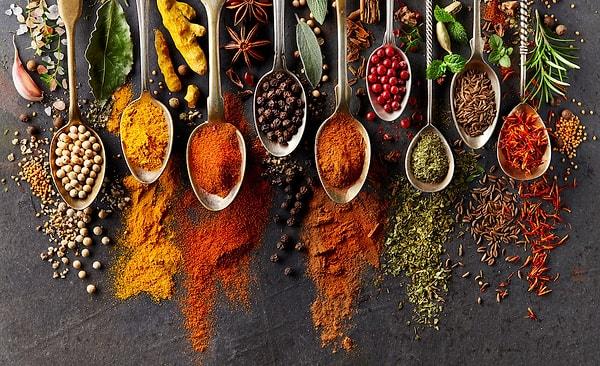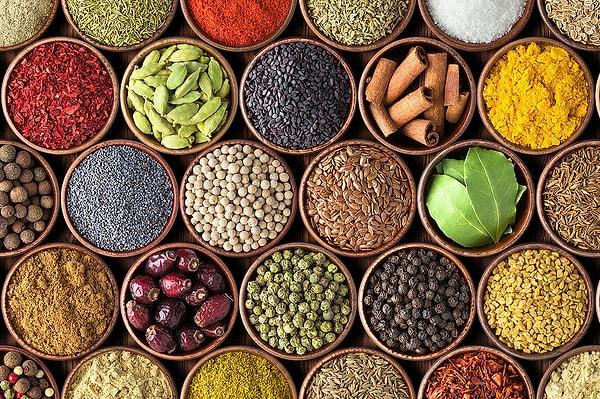The Mysteries of Spice Longevity: Do Spices Go Bad?
The culinary world is a tapestry of flavors, and at the heart of this vibrant mosaic lie spices – those aromatic, flavorful companions that transform ordinary dishes into culinary masterpieces. Whether it's the warmth of cinnamon, the pungency of cumin, or the heat of chili powder, spices play a pivotal role in elevating our gastronomic experiences. But, as with any culinary ingredient, there comes a time when we wonder: do spices go bad? In this exploration, we embark on a journey to unravel the mysteries of spice longevity, delving into the factors that affect their shelf life, signs of deterioration, and the best practices for storing these precious flavor enhancers.
Understanding the Shelf Life of Spices:

Spices, derived from seeds, bark, roots, or other plant parts, contain volatile compounds responsible for their distinct flavors and aromas. Like any natural product, spices have a finite shelf life, influenced by factors such as moisture content, exposure to light, and storage conditions. While spices don't typically spoil or become harmful to consume, their potency and flavor can diminish over time.
Moisture Content:
One of the primary enemies of spice longevity is moisture. Spices are vulnerable to clumping or molding when exposed to humidity. Even a small amount of moisture can compromise the texture and quality of ground spices, turning them into lumps or cakes. It's crucial to store spices in a dry environment to extend their shelf life.
Exposure to Light:
Light, especially sunlight, can accelerate the degradation of spices. The essential oils responsible for the flavors and aromas of spices are sensitive to UV rays, leading to flavor loss and a diminished overall quality. Storing spices in opaque containers and keeping them away from direct sunlight can help preserve their potency.
Storage Conditions:
The way spices are stored can significantly impact their shelf life. Airtight containers protect spices from exposure to air, preventing oxidation and flavor loss. Additionally, storing spices in a cool, dark place, such as a pantry or cupboard, helps maintain their quality. Avoid placing spice containers near heat sources or in areas with fluctuating temperatures.
Signs of Deterioration:

While spices may not go bad in the same way perishable foods do, they can lose their potency and flavor over time. Here are some common signs of spice deterioration:
Loss of Aroma:
A spice's aroma is a key indicator of its freshness and potency. If you open a spice jar and no longer detect the characteristic aroma associated with that spice, it may be a sign that the spice has lost its flavor.
Faded Color:
The vibrant colors of spices, such as the deep red of paprika or the golden hue of turmeric, can fade over time. A noticeable loss of color may indicate a decrease in the spice's flavor intensity.
Clumping or Caking:
Moisture is a culprit that can cause spices to clump or cake. If you notice your ground spices have formed hard lumps, it's a clear sign that moisture has infiltrated the container, impacting the spice's texture and quality.
Taste Discrepancies:
When you use a spice and find that the flavor doesn't match your expectations, it could be a result of the spice losing its potency. Spices past their prime may contribute less flavor to dishes, affecting the overall taste.
Best Practices for Spice Storage:

Preserving the freshness and flavor of your spice collection involves adopting best practices for storage. Here are some tips to maximize the shelf life of your spices:
Choose the Right Containers:
Opt for airtight containers made of glass or plastic with tight-sealing lids to prevent air and moisture from infiltrating. Consider transferring spices from their original packaging to containers that offer better protection.
Keep Spices Away from Heat Sources:
Heat can accelerate the deterioration of spices, causing flavor loss and impacting their quality. Store spice containers away from stovetops, ovens, and other heat-emitting appliances.
Use Opaque Containers:
Light exposure can lead to flavor degradation and color loss in spices. Store spices in opaque containers or keep them in a dark, cool pantry to protect them from the detrimental effects of light.
Label and Date Your Spices:
Keep track of the purchase date and label your spice containers. This practice helps you rotate your stock, ensuring that you use older spices first and maintain a fresh supply.
Avoid Grinding in Bulk:
While whole spices generally have a longer shelf life than ground ones, it's advisable not to grind spices in bulk unless you're certain you'll use them within a reasonable timeframe. Ground spices lose their potency more quickly than whole ones.
Store Spices in a Cool, Dark Place:
Heat and light are spice adversaries, so storing them in a cool, dark place, such as a pantry or cupboard, is essential. Choose a location away from direct sunlight and temperature fluctuations.
Invest in a Spice Rack or Drawer:
Consider using a spice rack or drawer organizer to keep your spices neatly arranged and easily accessible. This not only helps you maintain an organized kitchen but also allows you to monitor your spice collection more effectively.

Send Comment